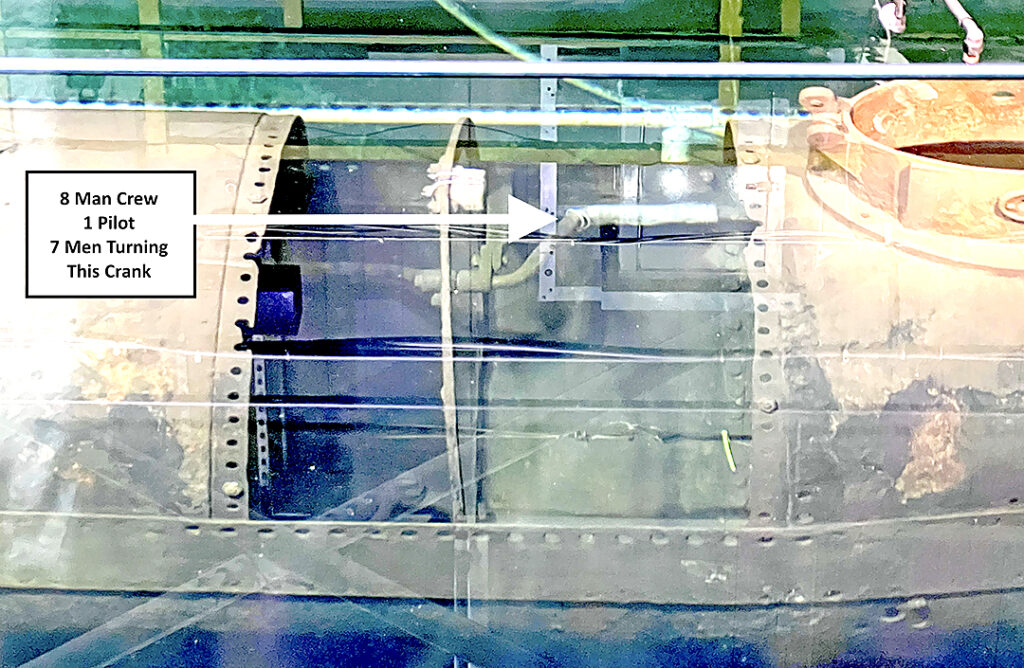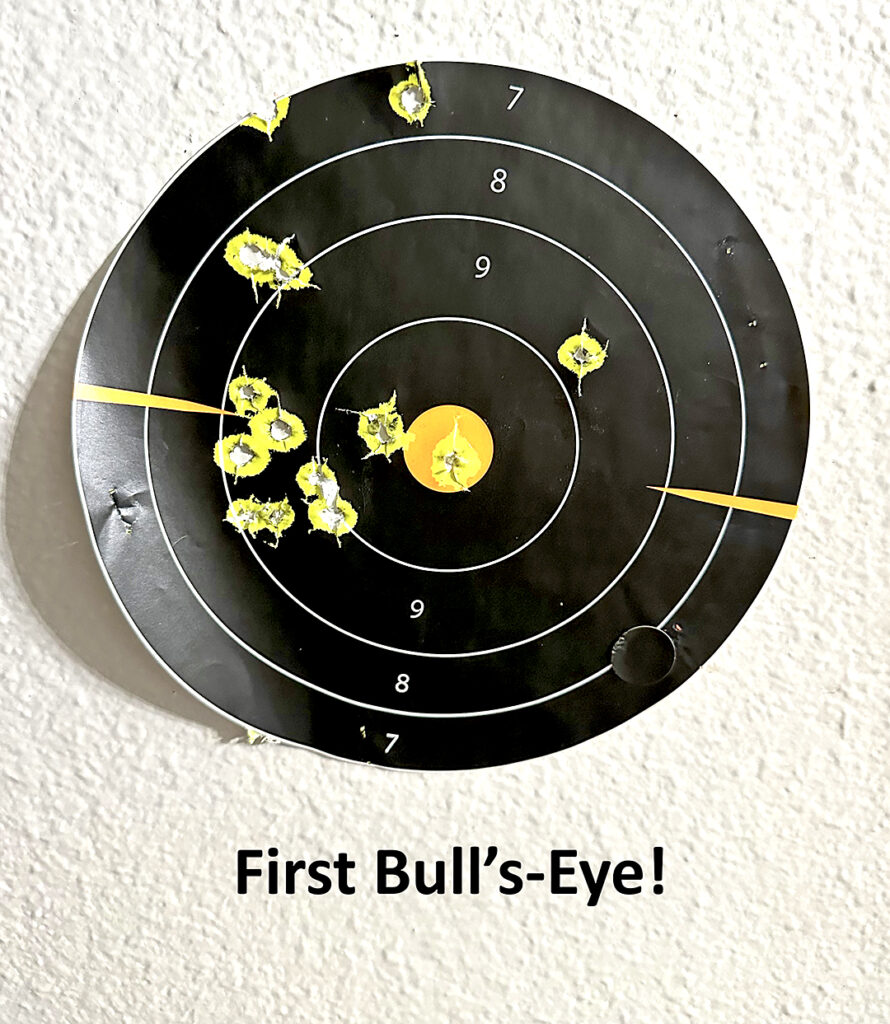Three submarines: The Turtle, Pioneer and Hunley

By MARJ LAW
Recently, Joe and I had the opportunity to visit the H. L. Hunley: a Confederate submersible which has the distinction to be the first submarine to sink an enemy warship. It was raised and taken to the Warren Lasch Conservation Center in North Charleston in 2000, where we were able to view it.
Built in 1863 and backed financially by Horace Hunley, this sub was powered not by diesel and not by nuclear: it was manned by a crew of seven powering a hand crank!
An eighth man served as the pilot.
The Hunley was only 40 feet long and was built of iron. Its hull was 4-feet 3 inches in diameter and it could move at a speed of 4 knots.
Two hatches: accessible by conning towers, were located in the forward and aft portions of the sub.
During the Civil War, Union ships blockaded Charleston Harbor. This stopped trade of indigo, rice and cotton, paralyzing the South.
Some Confederate ships managed to slide through the blockade, but this was not sufficient to make much of a difference with the economy of the southern states.
The blockade stopped critical resources such as clothes, food, artillery, and medicine from reaching these states.
Since few Confederate ships were able to penetrate the blockade, the hope was that the submarine could take out the Union ships.
The Hunley did manage to sink the USS Housatonic, a 16-gun, 1,240-ton sloop-of-war situated four miles off the entrance to Charleston Harbor. The Hunley carried a torpedo and rammed the Housatonic, detonating the torpedo and making a hole in the Housatonic’s hull.

After sinking the Housatonic, the Hunley itself sank. In 1995, the Hunley was located and raised by harnesses in 2000, then moved to the Warren Lasch Conservation Center.
Why did the Hunley sink?
According to Wikipedia, findings showed that: “Upon removal of the silt inside the hull, the skeletons of the crewmembers were found seated at their stations with no signs of skeletal trauma.”
Perhaps the trauma from the launched torpedo could have “transmitted pressure waves inside the vessel without damaging its hull.” Perhaps the Hunley’s crew died from lack of oxygen.
Whatever caused the Hunley to sink, its remains can be viewed in Charleston, South Carolina.
THE TURTLE
Even more primitive than the Hunley, the Turtle was, according to Wikipedia: “the world’s first submersible vessel with a documented record of use in combat.”
It was planned to be effective during the American Revolution in an attempt to overcome the blockade of Southern ports.
It was called the Turtle because of its clam turtle-like shape. This little guy was only 7.5 feet long by 6 feet wide according to Wikipedia.
Each part of the shell was made of oak and covered with tar. Wrought iron bands held these two parts together. Can you imagine working cranks for propulsion: with a large one in front and a smaller one on top as well as foot pedals to operate a rudder in the back? Sort of like patting your head and rubbing your tummy at the same time!
This one-person submarine could stay under the water for only 30 minutes, or less, depending on the oxygen used by the operator. Then the sub would have to surface to replenish its air supply.
The idea was to use a screw device to place a charge to the hull of the enemy and leave quickly before it was to detonate. It didn’t work because the screw was unable to pierce the enemy’s hull.
THE PIONEER
After the Turtle came the Pioneer. The Pioneer was launched in February 1862 and was hopefully designed to help break the blockade of Southern ports during the Civil War.
The Pioneer was only about 30 feet long and only 4 feet in diameter and resembled the shape of a cigar. It was made of ¼-inch thick iron.
According to Wikipedia: “The crew consisted of a pilot and one man to rotate the propeller manually.” It had small round windows.
The Pioneer was fragile, slow and leaky. Again, it was designed to attach a torpedo to the hull of an enemy vessel.
The Pioneer was never put in service. During testing, the Confederates scuttled the sub, to keep Yankees from obtaining it. After the war, the sub was scrapped for its metal.
Since Joe was on the Patrick Henry in the Navy, people often see his cap and remark that they could never be on a sub: that they would be too claustrophobic.
The Patrick Henry was 383 feet long and newer Fleet Ballistic Submarines are as long as 460 feet.
Imagine how these people would feel in the Turtle at only 7.5 feet long!
But Joe’s answer about his service on a Navy submarine is always: “If I had the opportunity, I’d do it all over again.”
Sally and her new Sig Sauer P238

Bullseye! Bullseye! Sally got a bullseye!
We’re at the Wakulla County Sheriff’s Office range on Wednesday, and it’s Sally’s third trip to the range with Joe and me.
This is how Sally got her gun: After shooting several .380 caliber handguns at the range, Sally emails to say that the gun she tried out, my little Sig Sauer P238, is her favorite over the Glock 42, Smith & Wesson .380 EZ Shield and the Ruger Security .380. She visits gun shops, and what do you know but Sig doesn’t make this gun anymore!
Sally wants this little Sig. She does her research and finds that it’s true: Sig does not make this gun now. However, the good news is that you can still find the Sig P238 if you look around for it.
So Sally does find her Sig at two places. She promptly purchases a used one that looks pretty good to her. The salesman points out a very minor wear spot on the block of the barrel. Sally’s a bit concerned, but she thinks this gun is for her.
She buys it and brings it to the range on Wednesday. She shows me the wear spot.

“Is it too bad?” she wonders.
I have to look carefully to locate it.
“That’s a common spot to show some signs of wear. I bought my gun new several years ago, and it shows a lot more wear than that,” I reassure her. “However, looking at that spot and racking the slide, I think the gun is quite dry and needs some grease.
Your gun will rack better, and wear spots (unless they’re unusually heavy wear) do better with a light coat of grease. Not too much, or it’s like swiping on too much furniture polish. Too much furniture polish attracts dust and dirt. Too much grease in a gun collects shooting residue and can lower its performance. Too little, and the slide doesn’t rack as smoothly as it ought to. Did you clean and lube the Sig since you bought it?”
“No, but my husband can do it.”
Joe shows her how to fieldstrip her new Sig.
“Now you can do it yourself,” I suggest. “You want to be master of your own gun.”
Sally nods, but doesn’t appear too enthusiastic. I get it. Cleaning a gun is like dusting furniture or vacuuming the floor. Has to be done, but isn’t much fun.
“How come my sights aren’t so white as your sights?” she asks.
I check. “You have night sights,” I tell her. “Normally, those are more expensive than my white dot sights.”
“They don’t show up like yours do,” she comments. “Can I get big white dot sights like the ones on your gun?”
Joe suggests she looks on the Sig Sauer site under “Accessories.”
“I’ll bet you can find them there,” he says.
“If you can’t (but I think you’ll find them), you might dab on some French White nail polish. Not white polish, but French White. It stands out more,” I advise.
We wait for the range to be cold, and then put up a target. Well, we try to put up a sticky target, but the back board is wet and the target won’t stick. Since Joe uses paper targets and carries a stapler, we ask for help and Joe staples the target firmly.
As soon as all of us are finished putting up our targets, we call “hot” so everyone knows the range is no longer cold. Everyone has on “eyes” and “ears” and we are all ready to bring our covered guns to the shooting bench. The shooting bench is really a counter-high table.
Sally has pre-loaded her two magazines. One is a flush 6 and the other is an extended 7-round magazine.
She racks the slide and aims. And aims some more. I notice she has crossed her thumbs behind this semi-automatic gun and am about to tell her to put both thumbs on the same side, when she notices what she has done and she moves her thumb over correctly. Good for her that she notices and self-corrects!
Finally, she pulls the trigger.
No dice.
She pulls again.
Nothing.
She turns toward me and flips the gun on its side while still keeping the muzzle of the gun pointing downrange.
I grin at her and point out that the magazine well is empty.
“Don’t print that!” she laughs.
“Don’t worry, Sally. Every shooter I know has done the exact same thing.”
Sally pushes in the extended magazine and gives it a little pop to make sure it’s in position.
She aims. She shoots.
Whack! Her bullet hits the target left: at the 9 o’clock position.
“Keep going!”
She shoots some more. All of her shots hit the target, but they are all to the left.
Joe watches her index finger.
“Maybe you can try shooting with the pad of your finger instead of the first joint. It might make a difference,” he suggests.
Sally ejects the first magazine and puts in the other. Again, all of her shots are to the left.
“I notice you normally wear glasses,” I say to her.
“Why, yes. I do. I have monovision. One eye is for distance: the other is for close up.”
“So, you’re seeing the target with your distance eye.”
“Well, no. I’ve been squinching my distance eye closed.”
“How is that working for you?” I grin at her.
“I should be using my distance eye,” she admits.
“You’ll find many experts advise looking at the target with both eyes. However, I have monovision too. I cock my head ever so slightly and shoot, using my distance eye. You might want to try it both ways. Shoot, leaving both eyes open and see how you do. Then shoot, using your dominant eye when you aim. See what works best for you.”
Sally shoots some more. Her bullets start to make holes just above and just below the x-ring.
“This shows your sights are aligned well: neither right nor left. Now, making sure your rear sights form a line with your front sight, shoot some more.”
She shoots.
“Marj, is that hole in the x-ring?” she asks, not believing what she’s seeing.
“Yes! Yes, you got a hit smack in the center of the x-ring! You made a bullseye! You surely did!”
Sally is happy. Sally is really happy.
“You know, Sally,” I begin, “you have a lot of holes above and below the x-ring. All of those are great shots. If you’re defending yourself, Mr. Bad doesn’t stand a chance.”
She agrees. But…
“I got a bullseye,” she marvels.
Marj Law is the former director of Keep Wakulla County Beautiful who has become an avid shooter in retirement.
Editor’s Note: This is a repeat of a column from last year.


